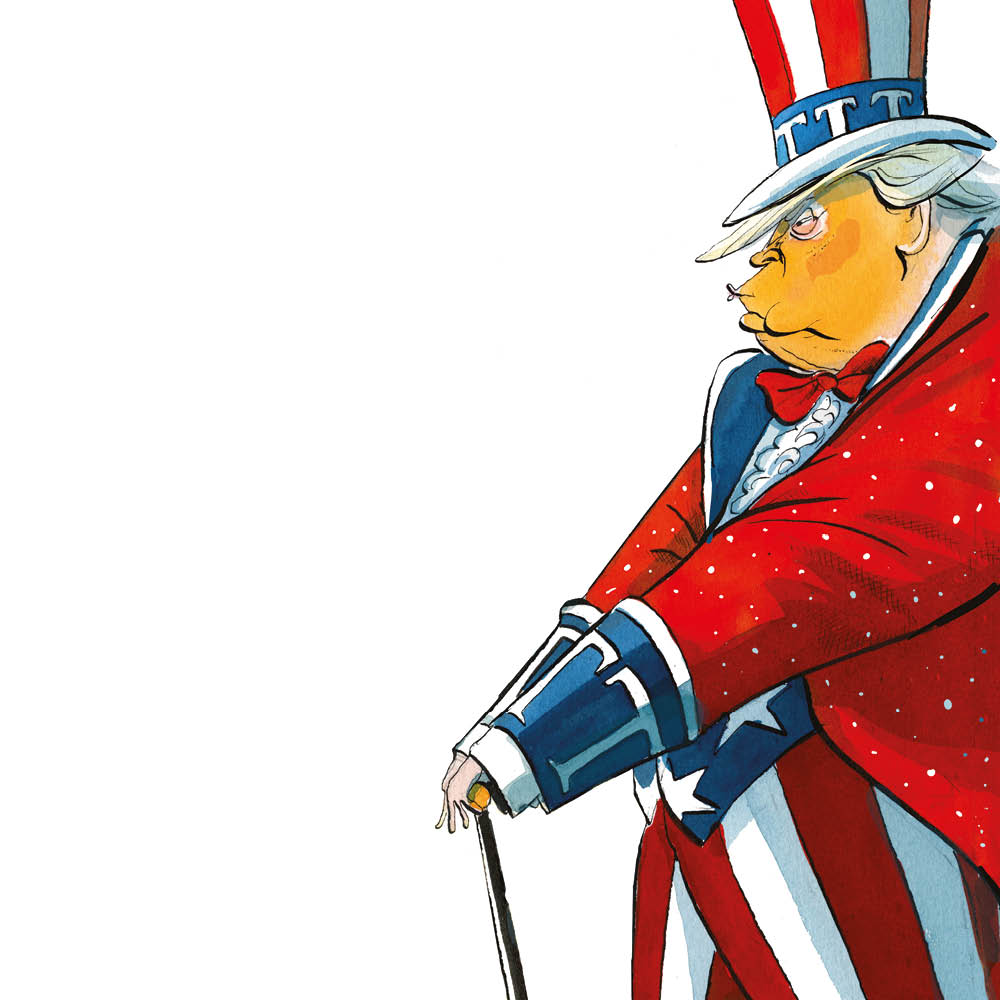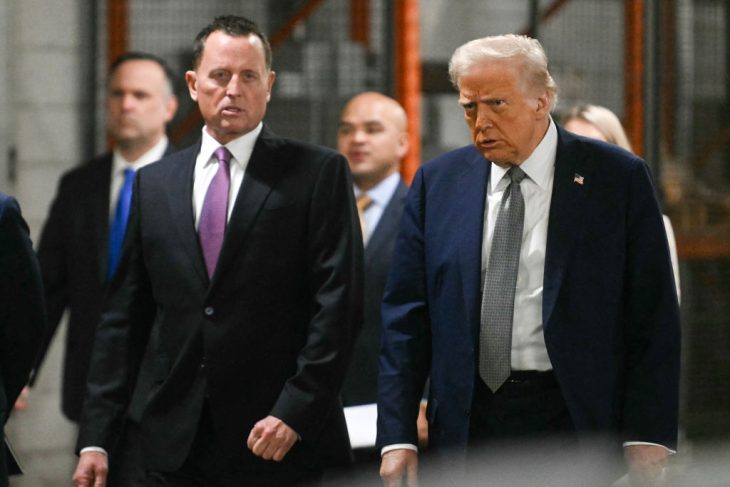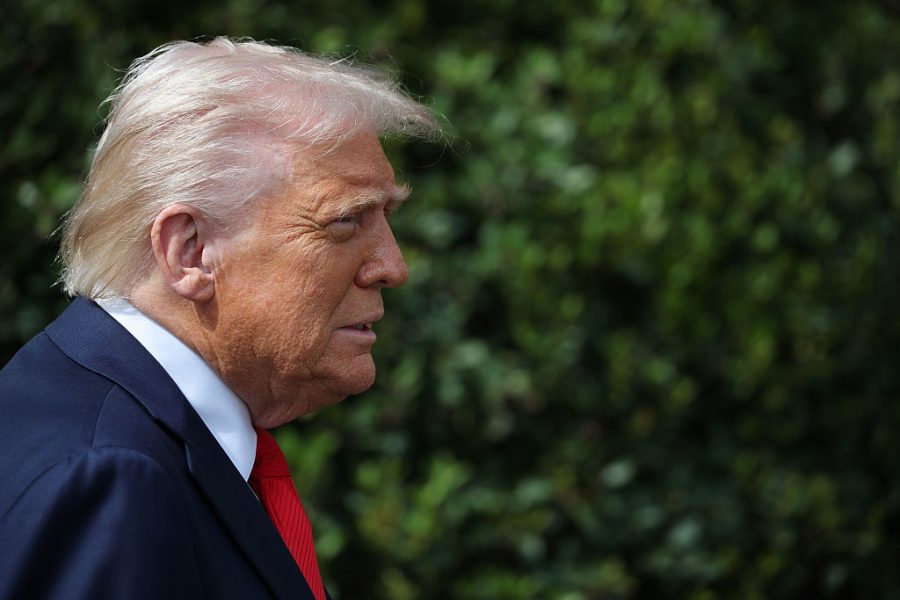From the outset, it was inconceivable. The idea that Donald J. Trump, limousine liberal, famed for bankruptcies both financial and moral, would triumph within a Republican Party less than four years removed from nominating Mitt Romney and Paul Ryan struck nearly every analyst as absurd on its face. Sure, there was a faction of support. Sure, he appealed to the populist wing. Sure, his message on immigration was more in line with the party’s base than the Wall Street Journal editorial page. But to win, in this crowded field, over so many leading lights of conservatism with the carefully constructed résumés designed to equip them for the nomination, if not the presidency? Inconceivable.
Of course, in 2016, he did it — and by now we all know how. What is less acknowledged even now is how close-run it was. Texas senator Ted Cruz’s late surge, blocked by the incomparably insufferable Ohio governor John Kasich, almost created a competitive convention in Cleveland, where party bigwigs and donors would have had their say in the outcome. With former nominees refusing to attend and major donor factions in open revolt, the constant raft of controversies surrounding Trump and his utter mess of an inner circle — Paul Manafort chaired the campaign from thirty days before the convention to thirty days after it — there was a very real possibility that the establishment’s hammer would have prevented his taking the nomination and ultimately the presidency.
Eight years later, it is impossible to imagine a Republican Party without Donald Trump. He has utterly taken over its institutions, mechanisms and leadership. With few exceptions, his whims become policy, his much-touted candidate endorsements tend to pay off, and the priorities of the GOP agenda have shifted entirely into what Trump is talking about, thinking about and mad about.
The decadent legacy media frames this as a cult of personality. But the truth is, if it is a cult of personality, it is a winning cult of personality. In nearly every corner of the western world, a form of right-leaning populism that has broken with libertarian economic orthodoxy has risen to new heights, often ushered along by leaders who purposely ape the tendencies of the American showman turned president. Under Trump’s leadership, the Republican Party transformed itself from an entity that existed to block Democratic wins to a party that could find victories of its own, particularly in a judicial branch that Trump — and Mitch McConnell, and the Federalist Society — remade according to their priorities.
So the party that gathered this summer in Milwaukee had a very different look and feel from the one that existed just a decade ago. It has more delegates and members of Congress who could fairly be categorized as social media influencers than those who will show up unironically wearing tricorn hats. But it also faces two major questions which have, due to the utter collapse of the Biden administration, not been asked. First, what would Donald Trump actually do with another four years as president? And second, once he wins, who takes over next?
The first question is somewhat easier to answer. You can assume more of the same from the third year — the last pre-Covid year — of Trump’s presidency, when he seemed to right the ship after being rapped on the nose in the midterms. There are numerous factions of hangers-on attempting to define the agenda this go-round — the America First Policy Institute, run by former Trump staffer Brooke Rollins; the Heritage Foundation and its Project 2025 effort, run by Kevin Roberts (Rollins’s successor as president of the Texas Public Policy Foundation); and the Center for Renewing America, run by Russ Vought, longtime Hill staffer and former Trump OMB chief.
All these initiatives, and some others, are spearheaded by people who champion their planned approach as the one true Trumpist path, despite the former president’s repeatedly denying having anything to do with them. One organization, the blandly named American Moment, headed by a twenty-six-year-old originally from Bangalore, is a perfect example of this, raising over a million dollars from donors as they promise to vet the loyalty of thousands of potential staffers for the next Trump administration. Factory farming remains a tradcon virtue, it turns out, even when it comes to résumés.
To more clearly assess where Trump goes from here one must look at the people around him, and assume that their views, unlike Trump’s, will remain consistent in a second administration. The safe bet is an uptick in personal loyalty, a younger set of politicians, and a skew away from the high-level military men Trump once admired but now distrusts. The attorney general slot will be a plum — the AG will be equipped and encouraged to satisfy a raft of hardcore conservative priorities. There is a strong possibility that one of the vice-presidential also-rans will occupy this job, though it has been rumored the current speaker of the House, Mike Johnson, aspires to the position.
That leads inevitably to the “who takes command next” question, which could involve a roster of competitors on the scale of 2016, and even some of its participants. The likelihood of a competitive Republican primary in 2028 is 100 percent. Even where Trump has an indicated preference, it’s impossible to envision a situation where his endorsement prevails over every faction of the GOP. In fact, the bigger question is how much of a role Trump personally wishes to play in the future of a party that has served him as a vehicle, but whose next generation of leaders may break with him in ways small and large. How much does he think he needs them? How much will they need him? This is a question Republicans haven’t faced since the end of Teddy Roosevelt’s tenure — and they must surely be thankful that, unlike then, the American presidency can no longer be held for more than two terms.
There is of course a third and broader question about the future of the Republican Party that will not be answered until Trump himself departs political office. That is: how much is his effect on the GOP tied to him personally, and how much is it something that will endure beyond his tenure?
On the Democratic side, we’ve already witnessed how this can play out in the negative. Bill Clinton was entirely a creature of the triangulating Nineties, with no clear heirs — even his own wife — in politics who achieved any level of success. Barack Obama’s tenure was so tied to his personal charisma and historic win that all his heirs-apparent seemed to fade and flounder. The Biden administration’s failures have in part been the worst ideas of the Obama administration, applied by nincompoops. The through lines just aren’t there, and their lack of follow-on is embodied by the choice of Kamala Harris.
You’re familiar by now with the vice president’s greatest hits. “It is time for us to do what we have been doing. And that time is every day.” “We have the ability to see what can be, unburdened by what has been, and then to make it actually happen.” Whether it’s Venn diagrams or yellow school buses or her flowery descriptions of a space launch, this is not a Vice President who will inspire a movement except to the betting markets. “At this point,” one experienced political consultant told me, “I’d run with John Fetterman.” Perhaps York could be the new Scranton.
For Trump, there are more conceivable successors. Ohio senator J.D. Vance, Arkansas senator Tom Cotton and even the once-hated Ted Cruz have paths for consideration. What will be utterly amusing to watch play out in the degraded husk of America’s partisan media is how quickly they will find strange new respect for the old fascist Orange Man they spent years decrying as the ultimate threat to all things good and noble. Say what you will of Donald Trump, he didn’t believe in a six-week limit on abortion like that fascist Marco Rubio! And so on. Perhaps the bigger question is whether a non-populist — a “normie conservative” — can find a way to appeal to the same group that elevated Trump in the first place. Many analysts have forgotten that Trump’s path to that initial 2016 victory was cut through the moderate part of the GOP — people who were the least likely to brand themselves as Tea Partiers or strong fiscal conservatives. His constituency now encompasses all factions, but he originated from the middle. If there is a candidate who can capture a similar portion of the electorate – the donor class would very much like that person to be Virginia governor Glenn Youngkin — then the inheritor of the Trumpian mantle may look very different from what Trump’s loudest supporters would prefer.
It seems clear that, even as much as many enduring members of the Republican Party coalition would like, there is no going back. There is no impending divorce or break-up with the populist right or its priorities. The green eyeshades have been banished. Liz Cheney and Adam Kinzinger aren’t walking through the door. There is only the party that Trump led into a new reality, overcoming enormous odds and adversaries along the way, to redefine the GOP according to the new terms of the post-9/11 century. It was a wild ride to get here. We’ll soon find out if the guardrails can take another beating.
This article was originally published in The Spectator’s August 2024 World edition.























Leave a Reply